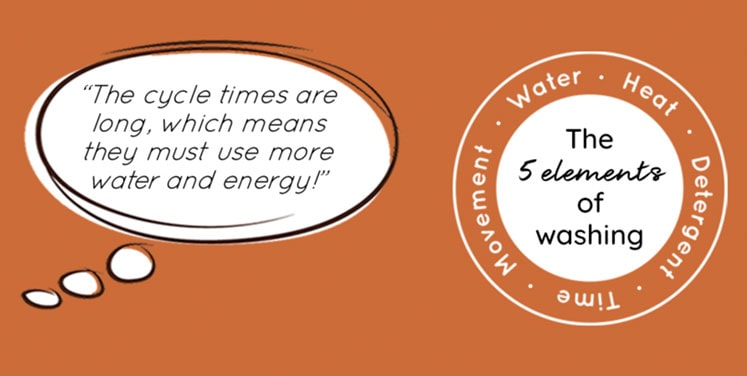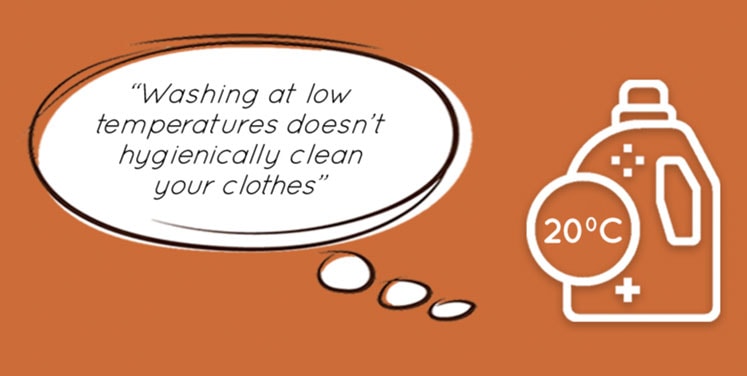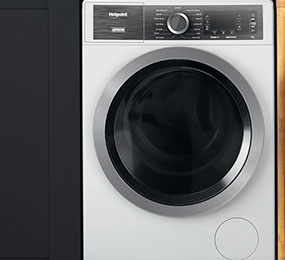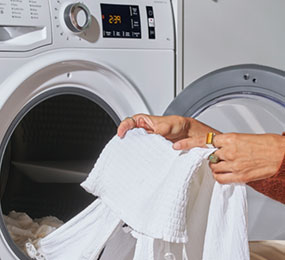We’re all feeling the pinch from our energy bills skyrocketing, but we don’t always have time to wait for an eco wash. Here we’ll explain why having a little patience with your laundry can help save you energy.
What is an eco-wash?
It’s a washing cycle, or series of washing cycles, that help you be more environmentally friendly and use less energy by washing at lower temperatures, usually 30 degrees or lower. Most eco cycles also use less water, by increasing the drum movements to ensure your laundry is cleaned effectively. There are lots of common misconceptions about eco cycles, with the most common being how can an eco cycle, which often has much longer cycle times, actually save energy?
Eco Cycle times are longer which must mean they use more energy?
To effectively clean fabrics, modern washing machines use a combination of water, heat, detergent, time, and movement, but levels of each can vary based on the chosen cycle. With the right combination, you can decrease one element, so long as you increase another. It takes significantly more energy to heat the water than it does to continue spinning the drum, meaning washing at high temperatures is the most expensive part of your cycle.
An eco cycle saves energy by using a lower water temperature. But by decreasing temperature, the washing machine will need more time to effectively clean your clothes, as it’ll need to move your clothes around the drum for longer to remove stains. Rather than relying on hot water temperatures to remove stains, the washing machine uses longer cycles and special drum movements to agitate your clothes, meaning you’ll still achieve great stain removal with an eco cycle, it will just take longer.

Washing at lower temperatures doesn’t hygienically clean your clothes
Many default to using hotter temperatures for their laundry, especially for items such as towels and sports gear, thinking you can only achieve a thorough clean with heat. If you read the labels on your clothes, most cotton fabrics can be washed at 40°C; but this is actually guidance for the maximum temperature it can safely be washed at, it doesn’t mean that washing at a lower temperature will result in a less effective wash for that item. Most laundry detergents are designed specifically with colder washes in mind, but if you want to be sure you can always look for bottles that say they’re cold wash suitable.

Protect your clothes
Did you know that washing at a lower temperature also protects your clothes and stops colours fading? This means your clothes will last longer, so you’ll be able to wear your favourite items time and time again, and saves you having to invest in a new wardrobe as frequently.
Rapid cycles
Most rapid cycles are designed to wash a reduced capacity, so you won’t be able to effectively wash a full load of laundry. An eco cycle will be able to wash the appliance’s maximum capacity, so if you’re not in a hurry or don’t have a full load, choose an eco cycle to help reduce your household’s energy consumption.
Hotpoint ActiveCare
Our ActiveCare technology can wash at temperatures as low as 20°C*, whilst still removing stubborn stains. The low temperatures care for your clothes as well as your wallet.
ActiveCare technology pre-mixes water and detergent to create a powerful cleaning mousse that penetrates deeply into fabrics, even at low temperatures, removing stains, such as wine, coffee, oil and tomato sauce. Find out more about the ActiveCare laundry range.



















.png)


